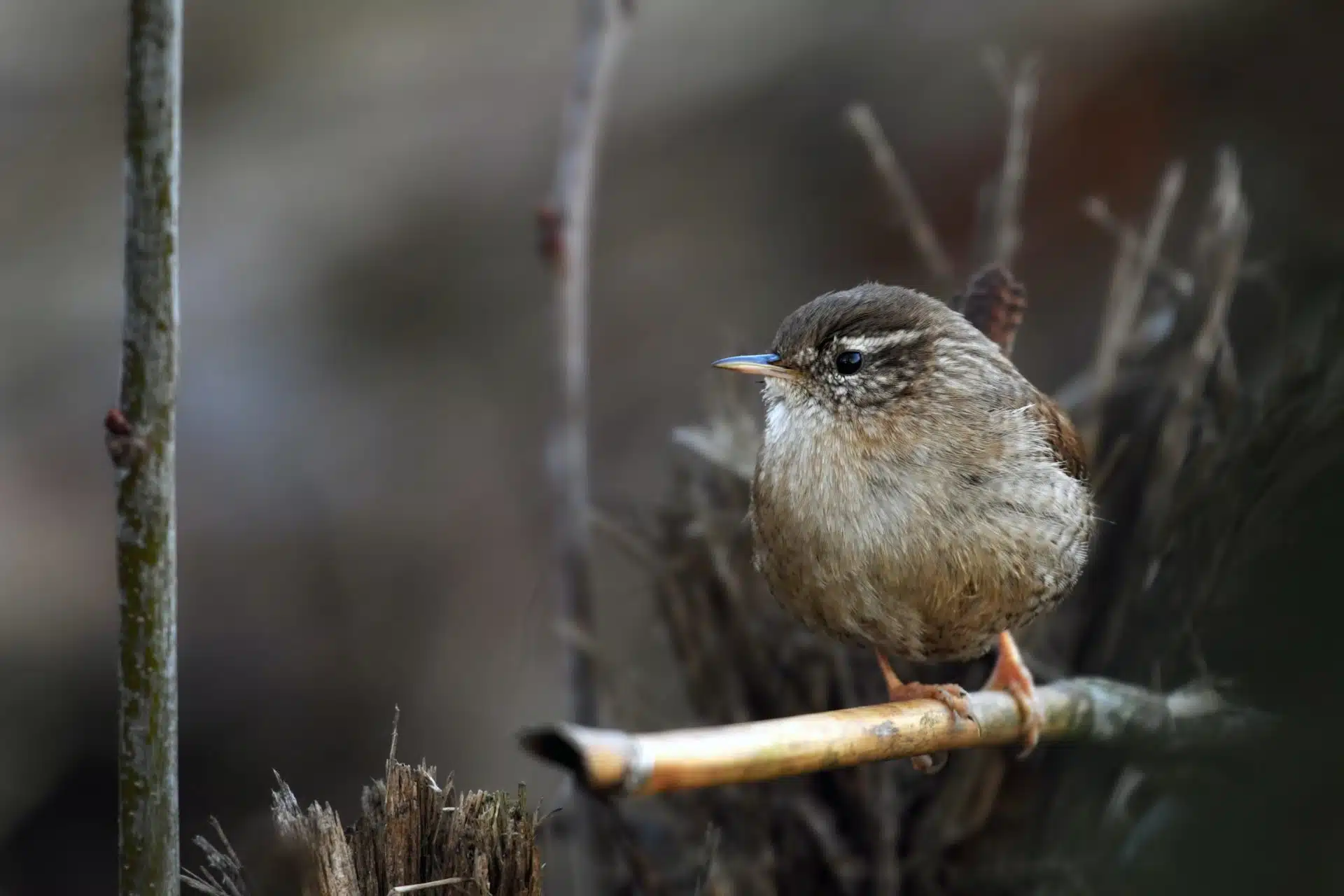Birds
Winter Wren
Troglodytes troglodytes

Winter wrens were first described in 1758 by Carolus Linnaeus a Swedish botanist, physician and zoologist. It is the only wren to be found outside the Americas, occurring also in Europe, Asia, and North Africa. They can be observed in many different habitat types, from cliffs to riparian areas to various coniferous / mixed forests foraging on insects, insect larvae, millipedes, spiders, and other invertebrates in dense tangles, fallen logs and other dead wood.
Per pound winter wrens deliver a song ten times more powerful than a crowing rooster. Weighing less than half an ounce individually, male winter wrens put their whole body into the effort; breast heaving, tail trembling, tipped heads pouring notes out of its gaping beak. The woodwind wren musicians produce a continuous song out of two voice boxes for eight seconds or more. The tinkles, twitters and trills cascade the male winter wrens territory exclaiming this is my spot and unless you are a breeding female, GET OUT!
Winter wrens are prominently polygynous, a male can have, at any one time, more than one female with an active nest on his territory. An active nest may contain five to eight white or slightly speckled eggs. The female incubates the eggs for 12 to 16 days. Both parents feed the young, which leave the nest at about 19 days.
In Ohio, winter wrens breed only in the northeast part of the state including Holden. Males build several nests in hemlock ravines. The normal round nest of grass, moss and lichen or leaves is tucked into a cavity in tree trunk, crack in a rock or crotch of a branch 6 feet off the ground. The nests are never lined with feathers or hairs until the female chooses one to use.
The population of the winter wren is stable or even increasing in some areas. However exoctic Woolly Adelgid, a small aphid-like insect, have greatly reduced Hemlock (Tsuga canadensis) in the eastern US including NE Ohio. This reduction could cause a population decline for winter wren. If you are buying hemlock trees, keep an eye out for white cottony growths on the needles and twigs or other signs of hemlock Woolly Adelgid. If you see such signs, call your local nursery inspector or ODA’s Plant Pest Control office at 614-728-6400 and someone will inspect those trees.
Best Location to View: Pierson’s Creek Loop, Stebbins Gulch
Color: Both sexes have crested head. Male: Incredibly colorful throughout; white throat, green head, eye red. Female: gray with darker crown; large white teardrop eye ring
Range: In North America it breeds from Alaska and British Columbia east through southern Canada to Newfoundland, and south to California, northern Idaho, the Great Lakes region, and southern New England, and in the mountains to Georgia. Spends winters across much of the southern U.S. south to southern California, the Gulf Coast, and Florida.
Size: 3.25"




